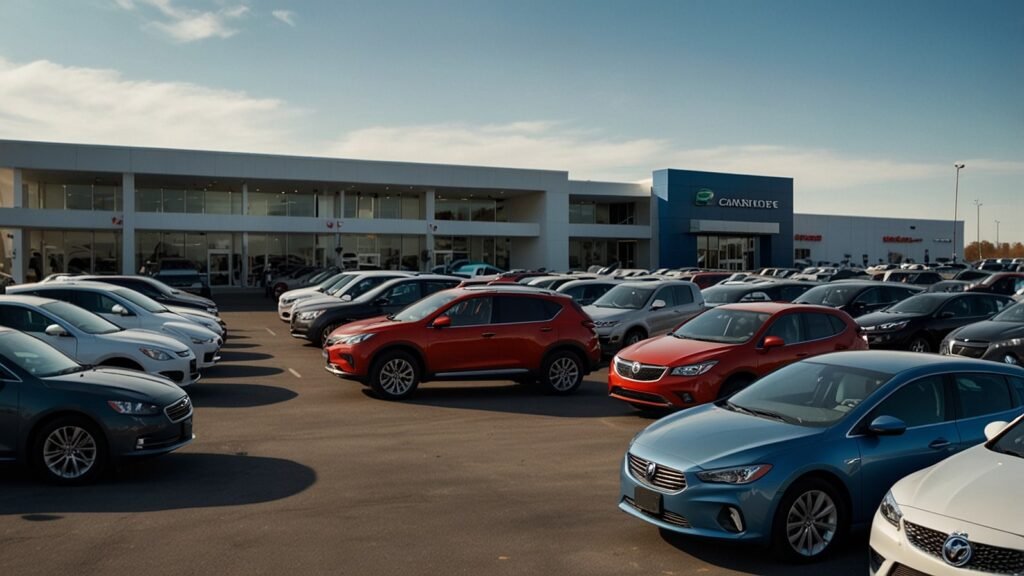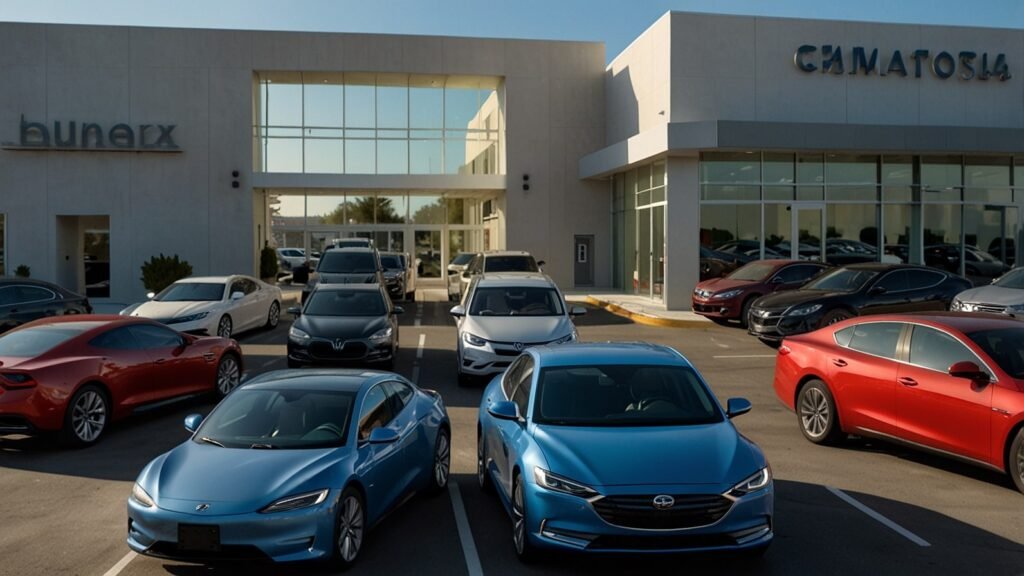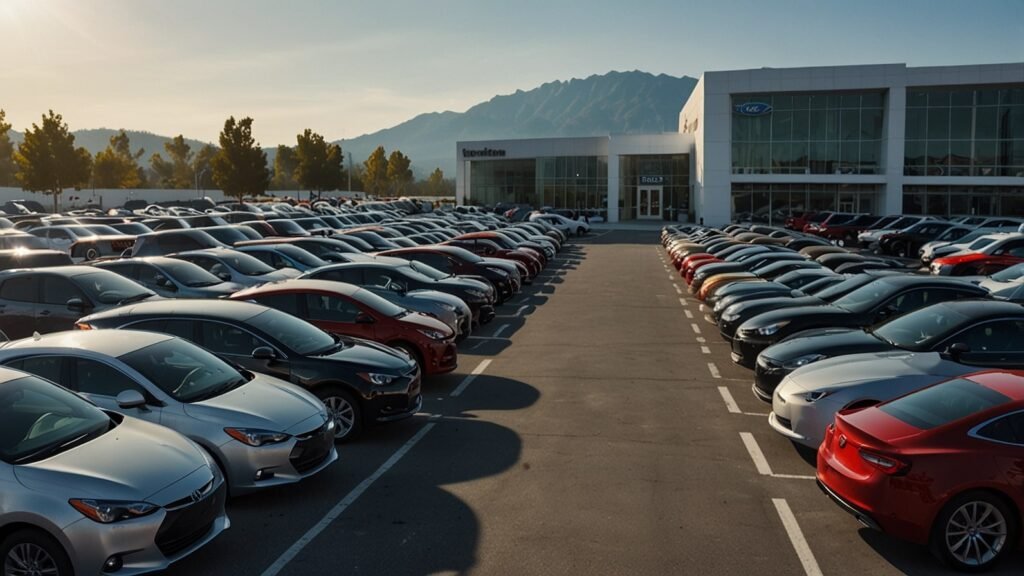
Hey, fellow car fans. When you are not in the auto industry like I am, it seems like an uphill task to keep pace with the industry. As the year has passed beyond the 2nd half, the recent reports by Cox Automotive provide us with a good opportunity to see the direction in which things are moving in the rest of the year 2025.
Their half-year reports and market analysis give the picture of consistent growth accompanied by certain obstacles, such as tariffs and rates. No wild swings, but mere practical trends, which may influence your next car purchase. We will discuss the quickest points in accordance with their recent data.
New Vehicle Sales: Sluggish yet Diligent Increment
Cox Automotive have revised its projection of sales of 15.7 million units of light vehicles within the United States in 2025 (a minor increase over their previous 15.6 million estimate in March 2010).
It is a notch lower than 2024, which is projected to be 16 million, but it is nonetheless developing into one of the better years since the pre-pandemic days. The sales rush followed at the beginning of the year, with March and April recording a sales pace of 17.5 million seasonally adjusted annual rate (SAAR) as the buyers rushed to avoid the possible increase in the tariffs.
August continued the trend, as new-vehicle sales increased 5.3 per cent compared with July, and the SAAR was around 16 million. Retail sales recorded a high seasonally and then slightly declined. New car inventory is back to normal, and this has helped to stabilise the situation. There are no more shortages as experienced a couple of years ago. However, the second half of the year may be slow as the prices could be creeping up as a result of those trade issues.

EVs Developing Traction
Among the brighter aspects of the Cox reports is the move to electrified cars. They project that approximately a quarter of all vehicles being sold in 2025 will be some type of electrified, with 10% being fully battery electric (BEVs) and the remaining plug-in or traditional hybrids. It is an improvement, a good step, with additional models going into the market and with improved infrastructure.
Consider August, as an example, the EV sales are an all-time high of 146,332 units, and it is the highest market share of approximately 9 per cent. Q3 will be the best EV quarter ever, which follows the 356,000 units of Q4 2024. Such brands as Tesla, Chevy, and Hyundai are on the frontline, and the Model Y and Equinox EV are performing well.
Vehicles Used EVs are also gaining ground with sales increasing by 59 per cent in one year to reach 2.4 per cent market share in August. The country has over 200,000 charging stations that are ensuring that people are making the switch even more easily. State incentives are also making the switch even easier.
The satisfaction of the consumers is also high; 75 per cent of EV purchasers report being satisfied with the experience, combining tech and simple dealership visits. The competition is increasing in terms of brands, and this should keep the prices at reasonable levels and the choices as many as possible.
Used Car Market: Inventory Easing, Sales Holding Firm
The used car side has been resilient, and Cox anticipates a third consecutive year of growth, though it has some tight spots. Sales of used vehicles in retail stores grew in August, and inventory was 2025 in early September, which is encouraging news to buyers who want a bargain. Listing prices are averaged at about 25,500, slightly above the levels at the beginning of the year, but affordability is on the rise as more vehicles trickle in.
The certified pre-owned (CPO) sales are also improving by 7 per cent month on month, and this is attracting individuals who desire reliability, without paying the price of a new car. The Manheim Used Vehicle Value Index is settling at the long-term averages, and repossession rates have returned to 2019 levels.
With that said, however, used inventory remains somewhat limited in relation to new, and thus prices are not falling as rapidly as some might have loved to see. All in all, it is a market that is moderately flattened, with demand remaining strong, particularly on proven models that are less than 25,000.
Affordability and Financing: A Better Picture
One of the areas that is on an upturn is affordability, according to Cox. The most recent reduction in rates was the first in years as the Fed decreased the auto loan rates in late 2024, with the new loans falling by a whole point and the used loans falling by half a point.
Although it is at approximately 9.5 per cent currently, an additional increase in the rates might ease borrowing. The credit market is also becoming loose, with credit portfolios doing well.
The prices of new vehicles are stable with average prices, yet the manufacturer incentives are contributing. Together with the rising wage and favourable consumer sentiment- which has improved by 7 per cent over the past few months)- There is an increased willingness to purchase by more people.
The profitability of dealers is still sound, but not at the mad heights during the pandemic. Even as tickets per person decline, service departments at franchises are reporting revenue growth, and that is an indication of increased repair prices and stable business.
Difficulties in the Future: Tariffs and Economic Vibes
It’s not all smooth roads. The tariffs form a huge wild card in the Cox outlook. The suggested tariff increases on foreign imported goods may increase the price of certain cars by $5,700 and those assembled in the U.S by more than $1,000.
That could be more of a blow to the sales in the second half of 2025, compressing inventory and decelerating the rate. Regulatory and political changes bring about uncertainty, but the market has demonstrated that it can recover after shocks.
The burden of high interest rates still lingers, and as the demand accumulated during the pandemic period is waning, it is preventing the situation from spiralling out of control. The Dealer Sentiment Index by Cox displays tempered optimism, as dealers have recorded improved sales and inventory, but have been cautious with expenditures.

What This Means for You as a Buyer
To any person doing his or her shopping today or in the near future, these trends imply that this is a market that can be captured but needs some planning. There are more options in the form of new cars and EVs, but beware of the price increases due to tariffs–do you want to seal a deal before they set in? A good idea is to use cars when you have a tight budget, and the inventory is increasing, which leads to an improved selection.
EVs have your interest, and it seems like a good time to jump in, as current records are being achieved and the infrastructure is expanding. Search available incentives and test drive some of them to find out what suits you. Altogether, 2025 is seen as being healthier in comparison to recent years, with growth in most vital areas achieved, and no significant crashes yet.
As usual, calculate the figures for financing and overall ownership costs. The information provided by Cox serves as a reminder that the industry is undergoing gradual changes; they may introduce new changes during their Q3 forecasting call, scheduled for the end of the month. What is your reaction to these trends? Should an EV switch be planned, or should it be gas? Drop a comment below. Happy driving!

